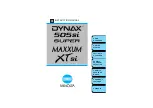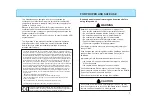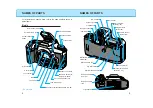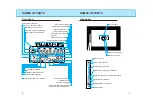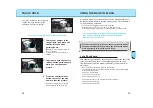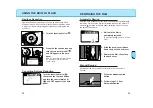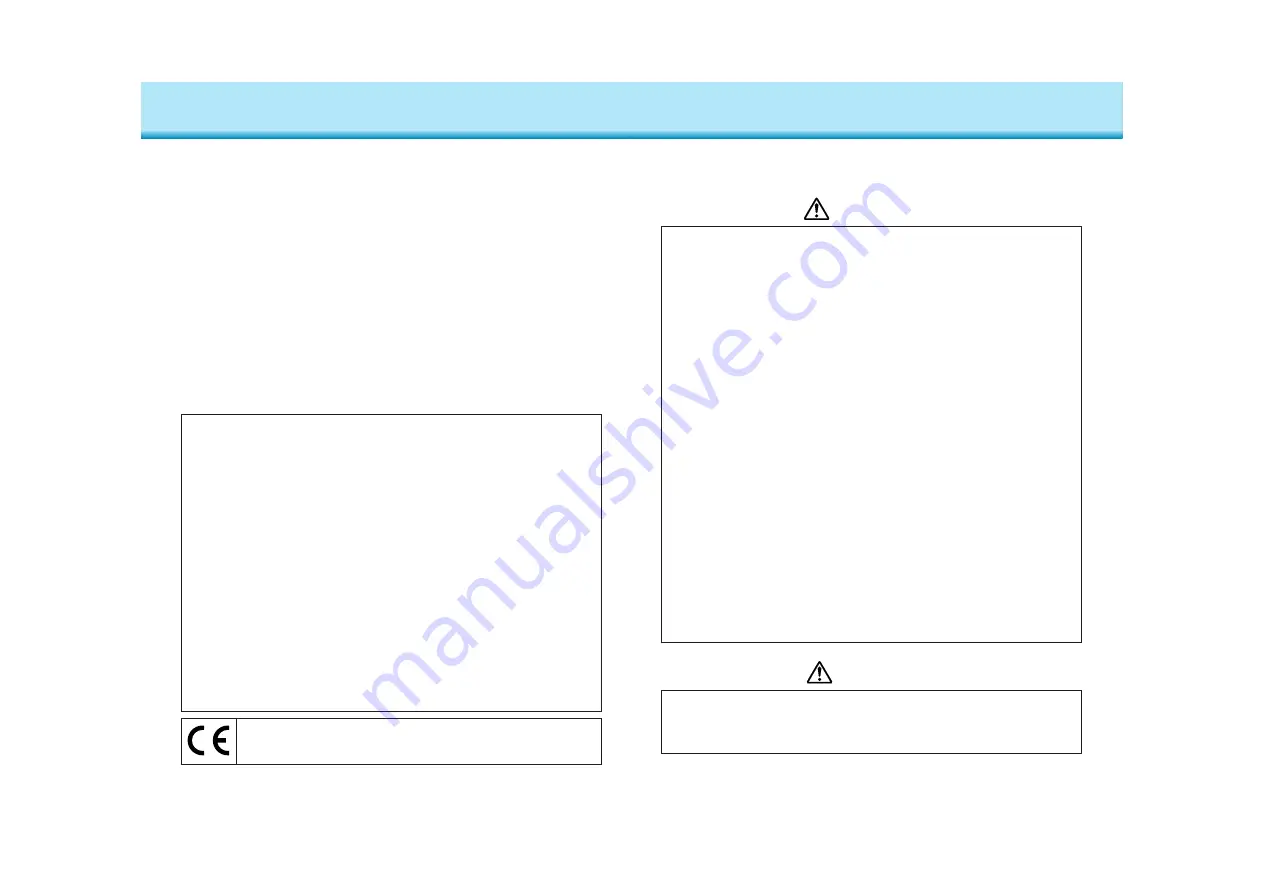
1
FOR PROPER AND SAFE USE
This manual has been designed to help you understand the
operation of your Minolta camera more quickly. After familiarizing
yourself with the camera, start with Level I and learn to operate the
camera in Full-Auto mode.
Move on to Level II and the Subject Program modes when you are
comfortable with the camera and want to have more control. Here
you decide the type of image you want to photograph and leave the
exposure details to the camera.
When you are ready for full control, move on to Level III and the ASM
exposure modes.
The information in this manual is relevant for products introduced
before December, 1998. Contact the nearest authorized Minolta
Service facility to obtain compatibility information for products
released after this date.
This mark certifies that this product meets the requirements of the EU
(European Union) concerning interference causing equipment regulations.
CE stands for Conformité Européenne (European Conformity).
This device complies with Part 15 of the FCC Rules. Operation is subject to the fol-
lowing two conditions: (1) This device may not cause harmful interference, and (2) this
device must accept any interference received, including interference that may cause
undesired operation. Changes or modifications not approved by the party responsible
for compliance could void the user's authority to operate the equipment. This equip-
ment has been tested and found to comply with the limits for a Class B digital device,
pursuant to Part 15 of the FCC Rules. These limits are designed to provide reason-
able protection against harmful interference in a residential installation. This equip-
ment generates, uses and can radiate radio frequency energy and, if not installed and
used in accordance with the instructions, may cause harmful interference to radio
communications. However, there is no guarantee that interference will not occur in a
particular installation. If this equipment does cause harmful interference to radio or
television reception, which can be determined by turning the equipment off and on,
the user is encouraged to try to correct the interference by one or more of the follow-
ing measures:
• Reorient or relocate the receiving antenna.
• Increase the separation between the equipment and the receiver.
• Connect the equipment to an outlet on a circuit different from that to which the
receiver is connected.
• Consult the dealer or an experienced radio/TV technician for help.
This Class B digital apparatus complies with Canadian ICES-003.
WARNING
Batteries may become hot or explode due to improper use.
• Use only the batteries specified in this instruction manual.
• Do not install the batteries with the polarity (+/-) reversed.
• Do not subject batteries to fire or high temperatures.
• Do not attempt to recharge, short, or disassemble.
• Do not mix batteries of different types, brands, or ages.
• Tape over lithium battery contacts before disposal.
• Follow local regulations for battery disposal.
Use caution, accidents may occur when using this product near
young children.
Keep batteries and other things that could be swallowed away from
young children. Contact a doctor immediately if an object is
swallowed.
Immediately remove the batteries and discontinue use if…
• the camera is dropped or subjected to an impact in which the
interior is exposed.
• the camera emits a strange smell, heat, or smoke.
Do not disassemble. Electric shock may occur if a high voltage
circuit inside the camera is touched. Take your camera to a Minolta
Service Facility when repairs are required.
Do not look directly at the sun through the viewfinder.
Read and understand all warnings and cautions before
using this product.
Do not allow a camera lens to point directly at the sun. Fire may
occur if sunlight comes to focus on a flammable surface. Replace
the lens cap when the product is not being used.
CAUTION

